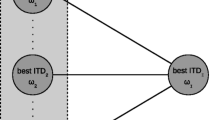Abstract
The mathematical modelling of the audiogram seems to be an attractive tool to characterize the behaviour of the human auditory system. In this paper, the authors present the relations of a model based on a hyperbolic tangent function, prior and after optimization, with the properties of the auditory brainstem response (abr) and the evoked otoacoustic emissions (eoae). The correlations are carefully analyzed and the importance of the loss in high frequency is worth pointing out. The correlation between some physiological data of the abr and the eoae with the thresholds observed on an audiogram are not greatly modified by the modelling and by the optimization. Thus the modelling seems to be a theoretical performance which cannot be substituted, for the application considered, by the knowledge of the audio-gram. Nevertheless, this work could be a good starting point for future applications.
Résumé
La modélisation mathématique de l’audiogramme apparaît comme un outil intéressant pour caractériser l’audition. Dans cet article, les auteurs présentent les relations d’un modèle basé sur une tangente hyperbolique, avant et après optimisation, avec des propriétés des potentiels évoqués auditifs (peap) et des otoémissions acoustiques provoquées (oeap). Les corrélations entre les données physiologiques des peap et des oeap et les seuils observés sur l’audiogramme ne sont pas fondamentalement modifiées par la modélisation et par l’optimisation. La modélisation apparaît ici comme étant un exercice théorique qui ne se substitue pas, pour les applications considérées, à la connaissance de l’audiogramme. Elle est plutôt une base de départ pour de futures applications.
Similar content being viewed by others
References
Bonfils (P.), Uziels (A.), Pujol (R.). A correlative study of evoked otoemissions properties and audiometric threshold.Arch. Otorhinolaryngol. (1988),245, pp. 53–56.
Coats (A. C), Martin (J. L.). Human auditory nerve action potential and brainstem evoked responses: effect of audio-gram shape and lesion location.Arch. Otolaryngol. (1977),103, pp. 605–622.
Mc Gee (T.), Krauss (N.), Wolters (C). Viewing the audiogram through a mathematical model.Ear and Hearing (1989),9, pp. 153–156.
Elberling (C), Parbo (J.). Reference data for abr in retroco-chlear diagnosis.Scand. Audiol. (1987),16, pp. 49–55.
Kemp (D. T.). Stimulated acoustic otoemissions from within the human auditory system.J. Acoust. Soc. Am. (1978),64, pp. 1386–1391.
Mitchell (C), Phillips (D. S.), Trune (D. R.). Variables affecting the auditory brainstem response: audiogram, age, gender and head size.Hearing Research (1989),40, pp. 75–86.
Moller (K.), Blegvad (B.). Brainstem responses in patients with sensorineural hearing loss.Scand. Audiol. (1976),5, pp. 115–127.
Bonfils (P.), Uziels (A.). Clinical applications of evoked acoustic emissions. Results in normally hearing and hearing-impaired subjects.Annals Otology Rhinology & Laryngology (1988),98, pp. 326–331.
Collet (L.), Gartner (M), Moulin (A.), Kauffmann (I.), Disant (F.), Morgon (A.). Evoked otoacoustic emissions and sensorineural hearing loss.Arch. Otolaryngol., Head and Neck Surgery (1989),115, pp. 1060–1062.
Budillon (P.), Sondaz (C). Modélisation mathématique d’audiogrammes.MST-GBM Training rapport, Univ. Lyon I (1989).
Collet (L.), Veuillet (E.), Berger-Vachon (C), Morgon (A.). Evoked otoacoustic emissions: relative importance of age, sex and sensorineural hearing loss using a mathematical model of the audiogram.Int. J. of Neurosciences. (1992),62, pp. 113–122.
Collet (L.), Berger-Vachon (C), Desreux (V), Morgon (A.). abr latency: relative importance of age, sex and sensorineural loss using a mathematical model of the audiogram.Int. J. of Neurosciences (in press).
Schwartz (D.). Méthodes mathématiques à l’usage des médecins et biologistes.Flammarion (1963).
Author information
Authors and Affiliations
Rights and permissions
About this article
Cite this article
Berger-Vachon, C., Collet, L. & Morgon, A. An optimized model of the audiogram relation with physiological properties of hearing. Ann. Télécommun. 49, 629–639 (1994). https://doi.org/10.1007/BF03001317
Received:
Accepted:
Issue Date:
DOI: https://doi.org/10.1007/BF03001317




